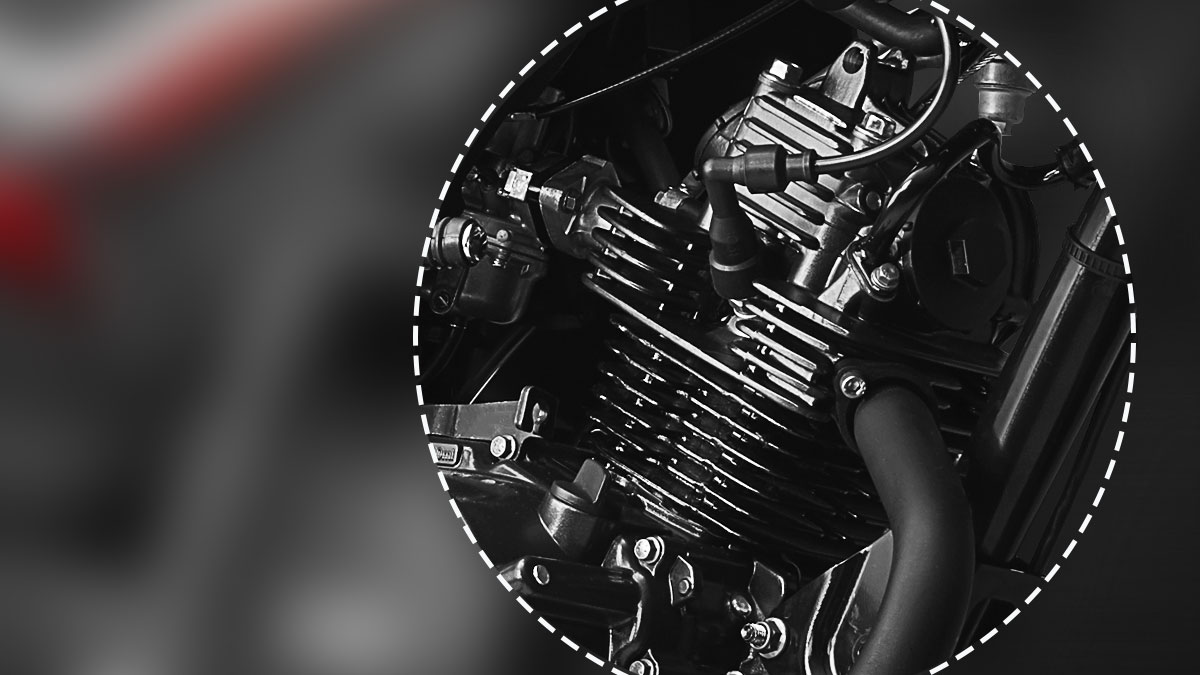For every explosion of the fuel-air mixture which happens inside the motor and sets the drivetrain in motion, it is the humble spark plug which initiates each one of those countless kabooms while it ignites between 500 – 3500 times per minute!
Naturally then, a healthy spark must be sent every time it’s required and for that reason, it’s vital that the spark plug of your two-wheeler’s engine is always in the pink of its health for the combustion cycle to complete efficiently. It might look like a simple metallic thing which doesn’t do much, but without it, the engine is as good as a matchbox with no matches in it. Read on then as we guide you to how you can go about checking this important link for its health and efficacy.
Appearance
The spark plug is also the litmus which tells you a lot about the state of things inside the engine. The next time you unplug it from the motor, here’s what you must look out for. A normal and properly functioning plug will have some white/grey/light brown discolouration around the electrode. The electrode itself will be slightly worn with most of the metal intact.
On the other hand, a spark plug with heavy deposits around the insulator and the electrode will be a result of poor fuel quality or high oil consumption from a mechanically-worn engine. This also leads to glow ignitions where the deposits heat up and glow on their own. Black coloured carbon deposits appear if the spark plug is frequently operated below its self-cleaning temperature. This happens when only short distances are ridden repeatedly or an incorrect spark plug with a heat rating different than specified by the manufacturer has been installed. Blistering, burn marks or glaze on the plugs could indicate that they are running too hot and are probably not the ones specified by the manufacturer for that engine.
Mechanical damage to the plug like chipped insulators or electrodes could indicate the presence of foreign bodies or hard deposits in the combustion chamber which could end up damaging engine internals. The other causes of such breakage could also be the use of wrong torque or probably the spark plugs were dropped on a hard surface (e.g. workshop floor) before installation.
Replacement
The need for replacement of spark plugs can be verified by the number of kilometres your two-wheeler has piled on or with a visual inspection of the electrodes. When it’s time to replace a spark plug, your two-wheeler’s maintenance manual will guide you with recommendations one must follow as specified. Under all circumstances, we recommend installing a new plug instead of refurbishing the existing unit and using it again. Because with wear, the electrodes round off and the amount of clearance increases. This causes the increase of the voltage required for the spark, which can damage several components of the ignition system as the rotor, distributor cap, ignition cables and even the ignition coil. A new spark plug will ensure ideal ignition and ensure the engine and its components function normally.
If your two-wheeler is used heavily under adverse conditions such as heavy traffic, cut the replacement schedule by half. For example, if the manufacturer recommends replacement of spark plugs every 20,000 km, the same should be replaced upon reaching 10,000 km. Ensure that the new spark plugs are the same type as the ones being replaced. Modern engines mostly make use of aluminium cylinder heads, a metal which expands more than the spark plug when heated up. This also results in the spark plug being ideally fastened in place. Therefore, as a basic rule, spark plug replacement should only take place with the engine completely cooled down.
The ratio of air and fuel in the combustible mixture going into the cylinder can also affect your plugs. If your two-wheeler’s engine is fed fuel via a carburettor, ensure it has been tuned according to manufacturer recommendations. A lean mixture will result in excessive load on the plugs and increase wear and tear. A rich setting can cause pre-detonation, which can cause damage to the valves, pistons and the plugs. Any aftermarket accessories like free flow exhaust, replacement filters etc. can affect the ratio. Ensure that you calibrate the fuel-air mixture to an ideal ratio after their fitment.
Once you get down to the business of replacing the plug, follow the instructions below:
- Loosen the old spark plug
- Remove any dirt and debris from the installation slot with compressed air before removing the plug
- Unscrew the old spark plug
- Remove any dirt from the spark plug bore area
- Screw the replacement spark plug in as far as it goes by hand
- Never use spark plugs that have fallen onto a hard surface after removal from the packaging
- Set the torque wrench to the correct tightening torque
- Place the nut of the torque wrench straight onto the tightening nut of the spark plug and tighten it
The cord which carries the electric charge into the plug is an equally important component. A cracked or worn out cord won’t supply the plug with the right amount of electricity, affecting the spark directly. Generally, it is recommended that cords and plugs should be replaced simultaneously.
Also Read:� How To Check, Clean And Service Your Two-Wheeler’s Sparkplug
The protective cap which sits above the spark plug protects it from the environment and helps to keep it clean. If there is any damage to the cap, replace it with a new unit immediately.
Follow these tips to ensure that the spark plug of your two-wheeler functions efficiently and reliably. Because if that’s not the case, there will never be any fire without a spark.



Please spark pluge order